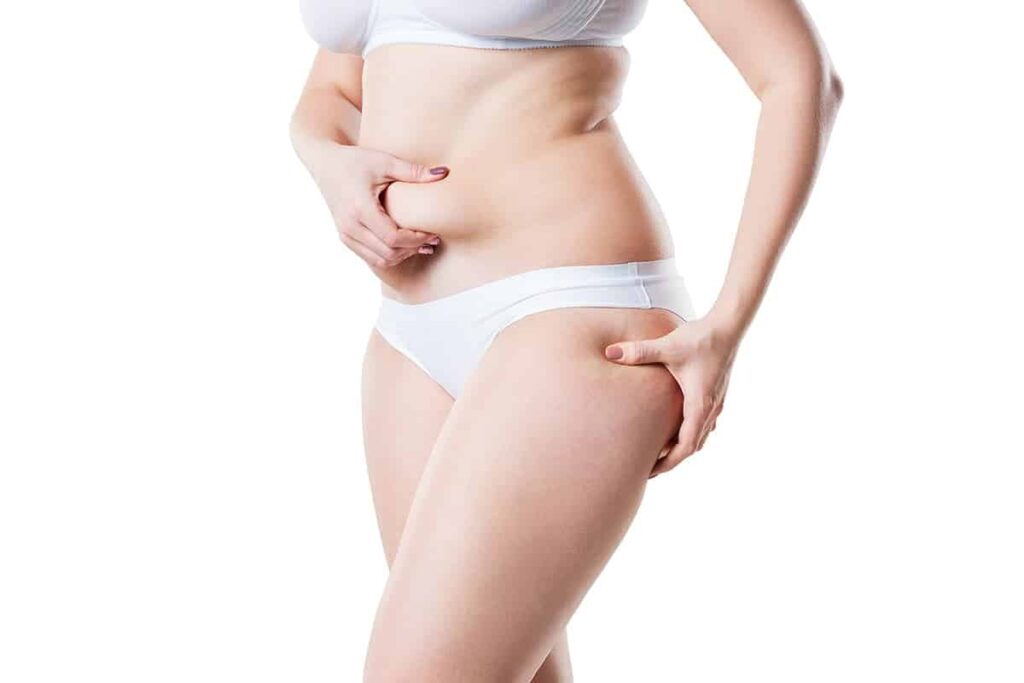Here are 4 frequently asked questions about liposuction
- Myth No. 1: I’m going to lose 5 litres of fat, so I’ll lose 5 kilos?
- Myth 2: Does liposuction improve cellulite and reduce sagging skin?
- Myth No. 3: I’ve read that the fat aspirated comes back after liposuction, is this true?
- Myth No. 4: Doctor, I’d like you to remove as much fat as possible: surely you can remove 10 litres of fat during the operation?
Myth No. 1: I’m going to lose 5 litres of fat, so I’ll lose 5 kilos?
Liposuction is not for weight loss. I know it’s hard to admit this, because it’s apparently ‘logical’ to think that you’re going to remove a volume of fat and therefore, incidentally, you’re going to lose the weight of that fat. But 1 litre of fat does not weigh much because its density is low. By removing 5 litres of fat, you will not lose 5 kilos because 1 litre of fat weighs much less than 1 kilo. In the first two weeks after the operation, you may even gain weight, as there will be oedema in the liposuctioned areas. You then return to your pre-operation weight within 3 to 4 weeks of the operation. If you manage to lose weight by adopting a healthier diet after the operation, the result will be even better! Liposuction is used to reshape and optimise areas of the body that do not respond to sport or dieting.
Myth 2: Does liposuction improve cellulite and reduce sagging skin?
Liposuction removes excess fat. It is not true that it improves cellulite. In some areas, such as the outer thighs, it can even make it worse. When there are large cellulite pockets, however, they can be improved by lipofilling these areas.
Concerning sagging skin: if the skin and connective tissue are already loose and damaged before the operation, the skin may sag even more after the operation. This can happen particularly in patients over the age of 45 who have had children or significant weight changes. However, it is true that with current techniques and depending on the case, it is sometimes possible to restore some of the skin’s tone after liposuction. We can only confirm this after an examination at Clinique Bellefontaine. In borderline cases, I prefer to perform a liposuction, then see how the skin looks after 6 months and, if necessary, carry out a facelift. Of course, if you are at risk of skin slackening after liposuction, I will warn you beforehand. In certain more extreme cases, liposuction must be combined with firming operations, such as abdominoplasty, a thigh lift or a body lift. It should never be forgotten that a facelift results in large, often visible scars, and in my opinion remains a ‘semi-aesthetic’ operation.
Myth No. 3: I’ve read that the fat aspirated comes back after liposuction, is this true?
No, as long as you don’t gain more than 3 kilos after the procedure. Liposuction removes fat cells permanently. Even so, if you regain weight, the remaining fat cells may increase in size if you take in too many calories.
Myth No. 4: Doctor, I’d like you to remove as much fat as possible: surely you can remove 10 litres of fat during the operation?
As I tell all my patients: “I always remove as much fat as possible, because I like to see as much difference as possible at the final check-up”. There are certain areas, such as the hips, where it is permissible to remove almost all the fat. There are other areas, such as the inner or outer thighs, where it is necessary to leave superficial fat, otherwise there will be a lot of irregularities afterwards.
To remain within safe limits in terms of patient health, we are authorized to remove a maximum of 5 or even 6 liters per liposuction session. However, the average remains between 1 and 3 liters per liposuction.


